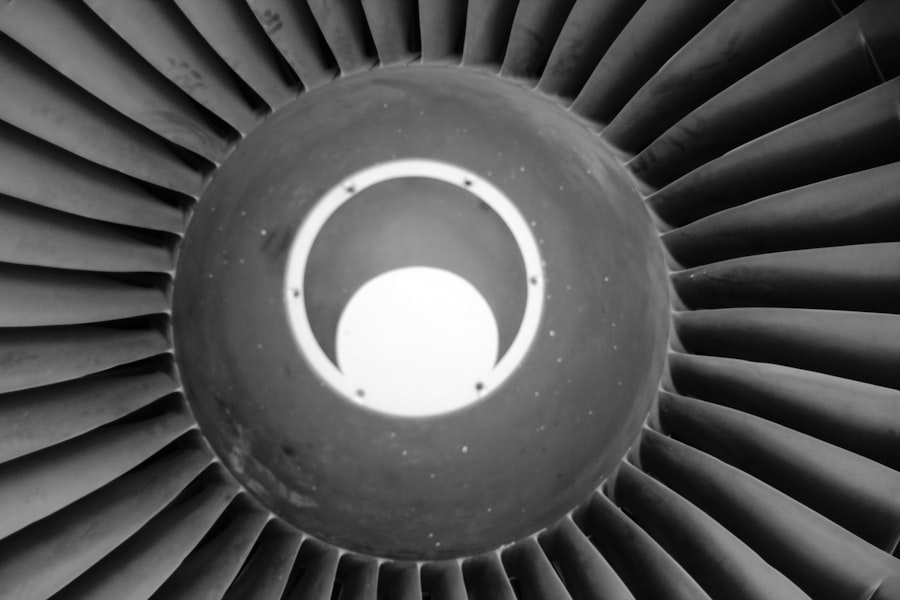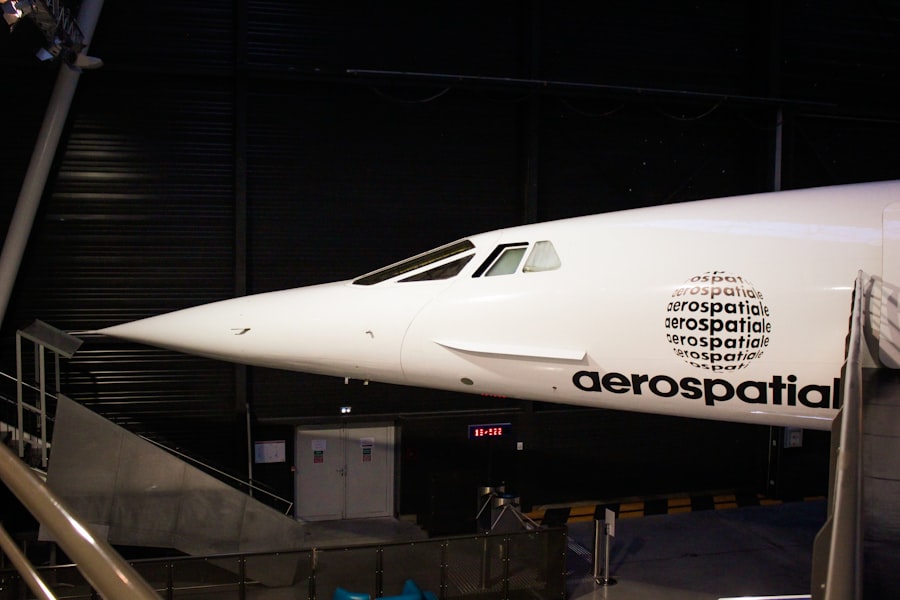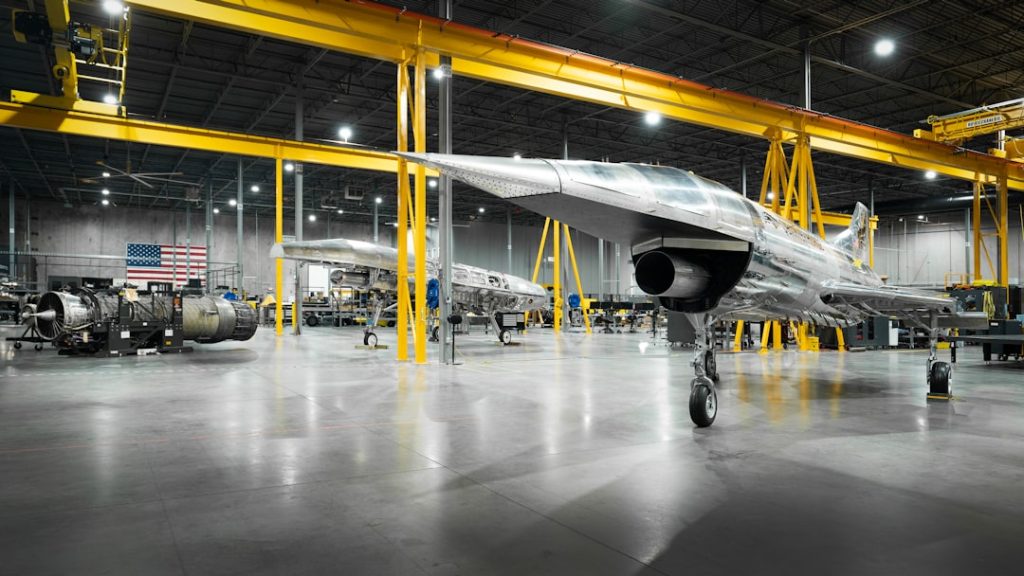The aerospace industry stands as a testament to human ingenuity and technological advancement, encompassing a wide array of activities related to the design, development, and production of aircraft, spacecraft, and related systems and equipment. Leading aerospace companies play a pivotal role in shaping the future of air travel and space exploration, driving innovations that not only enhance efficiency and safety but also expand our understanding of the universe. These companies are not merely manufacturers; they are at the forefront of research and development, pushing the boundaries of what is possible in aviation and space technology.
The significance of these companies extends beyond their economic contributions. They are instrumental in fostering international collaboration, enhancing global connectivity, and addressing pressing challenges such as climate change through sustainable practices. The aerospace sector is characterized by its complexity and the high level of expertise required, making the leading companies within it critical players in both national and global contexts.
As we delve deeper into the history, innovations, and future prospects of this industry, it becomes clear that the contributions of these aerospace giants are foundational to modern society.
Key Takeaways
- Leading aerospace companies have played a crucial role in shaping the industry and driving innovation.
- Aerospace innovation has a rich history, with key milestones and breakthroughs that have revolutionized the field.
- Top aerospace companies like Boeing, Airbus, and Lockheed Martin have made significant contributions to the industry through their cutting-edge technology and advancements.
- Innovations in aerospace technology have led to the development of more efficient and sustainable aircraft, as well as advancements in space exploration.
- The future of aerospace innovation holds promise for further advancements in technology, sustainability, and space exploration, with leading companies at the forefront of these developments.
History of Aerospace Innovation
The history of aerospace innovation is a rich tapestry woven with the threads of ambition, creativity, and technological breakthroughs. It began in the early 20th century with pioneers like the Wright brothers, who achieved the first powered flight in 1903. This monumental event marked the dawn of a new era in transportation, igniting a wave of interest and investment in aviation.
The subsequent decades saw rapid advancements, particularly during World War I and World War II, when military needs accelerated the development of aircraft technology. Innovations such as the introduction of metal airframes and more powerful engines transformed aviation capabilities. Post-war periods further catalyzed aerospace innovation, leading to the establishment of commercial aviation as a viable industry.
The introduction of jet engines in the 1950s revolutionized air travel, drastically reducing flight times and making air travel accessible to the masses. The Boeing 707, launched in 1958, epitomized this shift, setting new standards for passenger comfort and efficiency. Concurrently, the space race between the United States and the Soviet Union spurred unprecedented advancements in rocket technology and satellite communications.
The launch of Sputnik in 1957 by the USSR marked humanity’s first foray into space, prompting a flurry of research and development that would lay the groundwork for future exploration.
Top Aerospace Companies and Their Contributions

Several companies have emerged as leaders in the aerospace sector, each contributing uniquely to its evolution. Boeing, one of the largest aerospace manufacturers globally, has been instrumental in developing commercial jetliners that have transformed air travel. The Boeing 747, introduced in 1970, was a game-changer with its capacity to carry hundreds of passengers over long distances.
This aircraft not only made international travel more feasible but also set a precedent for future designs focused on efficiency and passenger comfort. Another key player is Airbus, which has consistently challenged Boeing’s dominance in the commercial aviation market. The introduction of the Airbus A380 in 2005 marked a significant milestone as the world’s first double-decked passenger aircraft.
This innovation not only increased passenger capacity but also showcased advancements in aerodynamics and fuel efficiency. Additionally, companies like Lockheed Martin and Northrop Grumman have made substantial contributions to military aviation and space exploration. Lockheed Martin’s F-22 Raptor and Northrop Grumman’s Global Hawk drone exemplify cutting-edge technology in defense applications, emphasizing stealth capabilities and autonomous operations.
Innovations in Aerospace Technology
| Category | Metric | Value |
|---|---|---|
| Efficiency | Fuel consumption | 20% reduction |
| Safety | Accident rate | 30% decrease |
| Technology | Advanced materials | Carbon fiber, titanium |
| Speed | Supersonic travel | Mach 2.2 |
The aerospace industry is synonymous with innovation, continually evolving to meet the demands of safety, efficiency, and environmental sustainability. One notable advancement is the development of composite materials that have revolutionized aircraft design. These materials are lighter yet stronger than traditional metals, allowing for improved fuel efficiency and reduced emissions.
For instance, Boeing’s 787 Dreamliner extensively utilizes composite materials, resulting in a significant reduction in weight and an increase in fuel economy compared to older models. Moreover, advancements in avionics have transformed how aircraft operate. Modern aircraft are equipped with sophisticated navigation systems that utilize satellite technology for precise positioning and route optimization.
The implementation of fly-by-wire systems has enhanced flight control by replacing traditional mechanical linkages with electronic interfaces, allowing for greater responsiveness and safety. Additionally, innovations such as 3D printing are beginning to play a role in manufacturing processes within aerospace. This technology enables rapid prototyping and production of complex components, reducing lead times and costs while allowing for greater design flexibility.
Advancements in Space Exploration
The realm of space exploration has witnessed remarkable advancements over recent decades, driven by both governmental agencies and private enterprises. NASA’s Apollo program set the stage for human exploration beyond Earth, culminating in the historic moon landing in 1969. This achievement not only demonstrated technological prowess but also inspired generations to pursue careers in science and engineering.
Following Apollo, initiatives like the Space Shuttle program facilitated regular access to low Earth orbit, enabling scientific research and international collaboration aboard platforms like the International Space Station (ISS). In recent years, private companies such as SpaceX have revolutionized space exploration by significantly reducing costs associated with launching payloads into orbit. SpaceX’s Falcon 9 rocket has become a workhorse for satellite deployment and resupply missions to the ISS.
The successful development of reusable rocket technology has further transformed the economics of space travel, paving the way for ambitious projects like crewed missions to Mars. Additionally, advancements in satellite technology have enhanced global communication systems, weather forecasting, and Earth observation capabilities, underscoring the multifaceted impact of space exploration on everyday life.
Sustainability and Environmental Initiatives in Aerospace

As concerns about climate change intensify, leading aerospace companies are increasingly prioritizing sustainability initiatives within their operations. The aviation sector is responsible for a significant portion of global greenhouse gas emissions; thus, addressing this challenge is paramount for industry leaders. Many companies are investing heavily in research to develop more fuel-efficient engines that produce fewer emissions.
For example, Pratt & Whitney’s geared turbofan engine technology has demonstrated substantial improvements in fuel efficiency compared to traditional engines. Furthermore, there is a growing emphasis on alternative fuels within the industry. Sustainable Aviation Fuel (SAF) derived from renewable sources is being explored as a viable option to reduce carbon footprints associated with air travel.
Major airlines are beginning to incorporate SAF into their operations as part of broader commitments to achieve net-zero emissions by 2050. Additionally, aerospace manufacturers are exploring electric propulsion systems for short-haul flights, which could significantly reduce reliance on fossil fuels.
Future of Aerospace Innovation
Looking ahead, the future of aerospace innovation promises to be both exciting and transformative. The integration of artificial intelligence (AI) into aviation operations is poised to enhance safety and efficiency significantly. AI algorithms can analyze vast amounts of data from various sources to optimize flight paths, predict maintenance needs, and improve overall operational performance.
This technology could lead to more efficient air traffic management systems that reduce congestion and minimize delays. Moreover, advancements in urban air mobility (UAM) are set to reshape transportation within cities. Companies are developing electric vertical takeoff and landing (eVTOL) aircraft designed for short-distance travel within urban environments.
These vehicles aim to alleviate traffic congestion while providing an alternative mode of transportation that is both efficient and environmentally friendly. As regulatory frameworks evolve to accommodate these innovations, we may witness a new era of urban transportation that integrates seamlessly with existing infrastructure.
Impact of Leading Aerospace Companies
The impact of leading aerospace companies on society cannot be overstated; they are not only shaping the future of transportation but also influencing global economies and international relations. Their relentless pursuit of innovation drives advancements that enhance safety, efficiency, and sustainability across various sectors. As we continue to explore new frontiers in aviation and space exploration, these companies will remain at the forefront of technological progress.
The collaborative efforts between government agencies and private enterprises will be crucial in addressing challenges such as climate change while expanding our capabilities beyond Earth. The ongoing commitment to research and development ensures that the aerospace industry will continue to evolve, inspiring future generations to dream big and reach for the stars. As we look toward this promising future, it is clear that leading aerospace companies will play an integral role in shaping not only how we travel but also how we understand our place in the universe.


